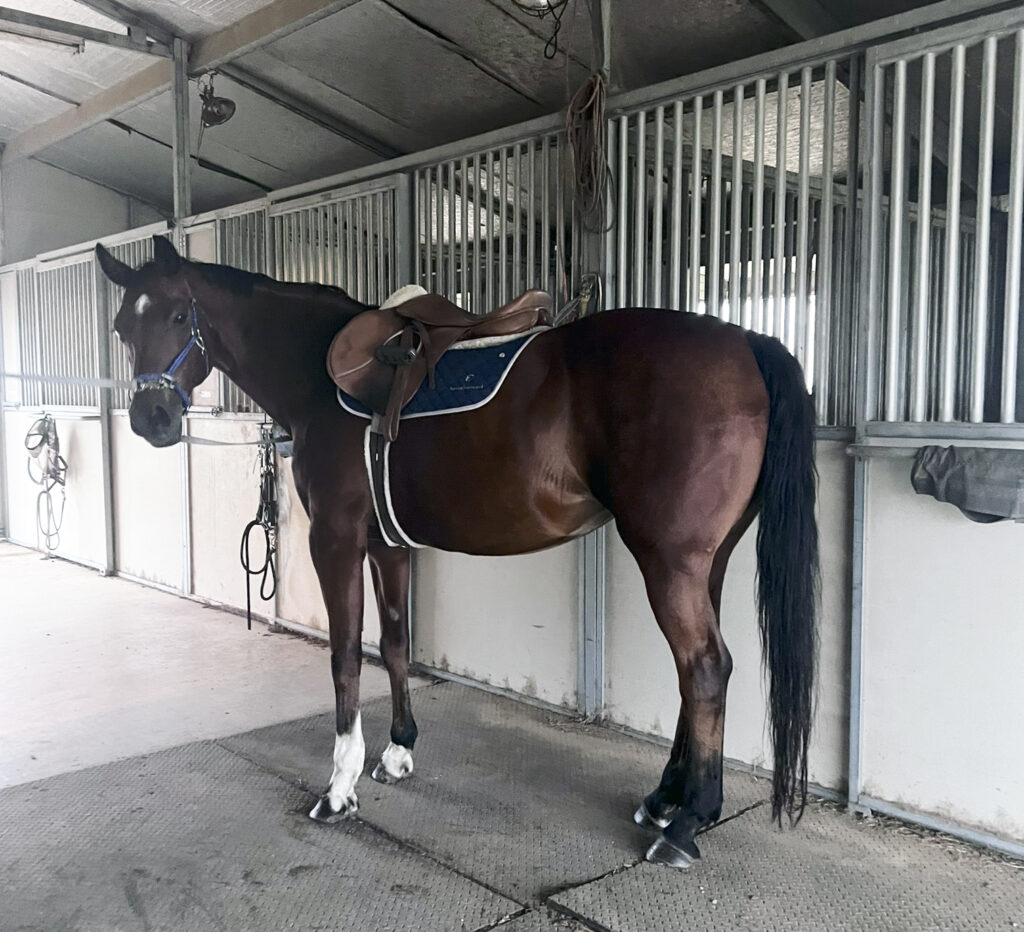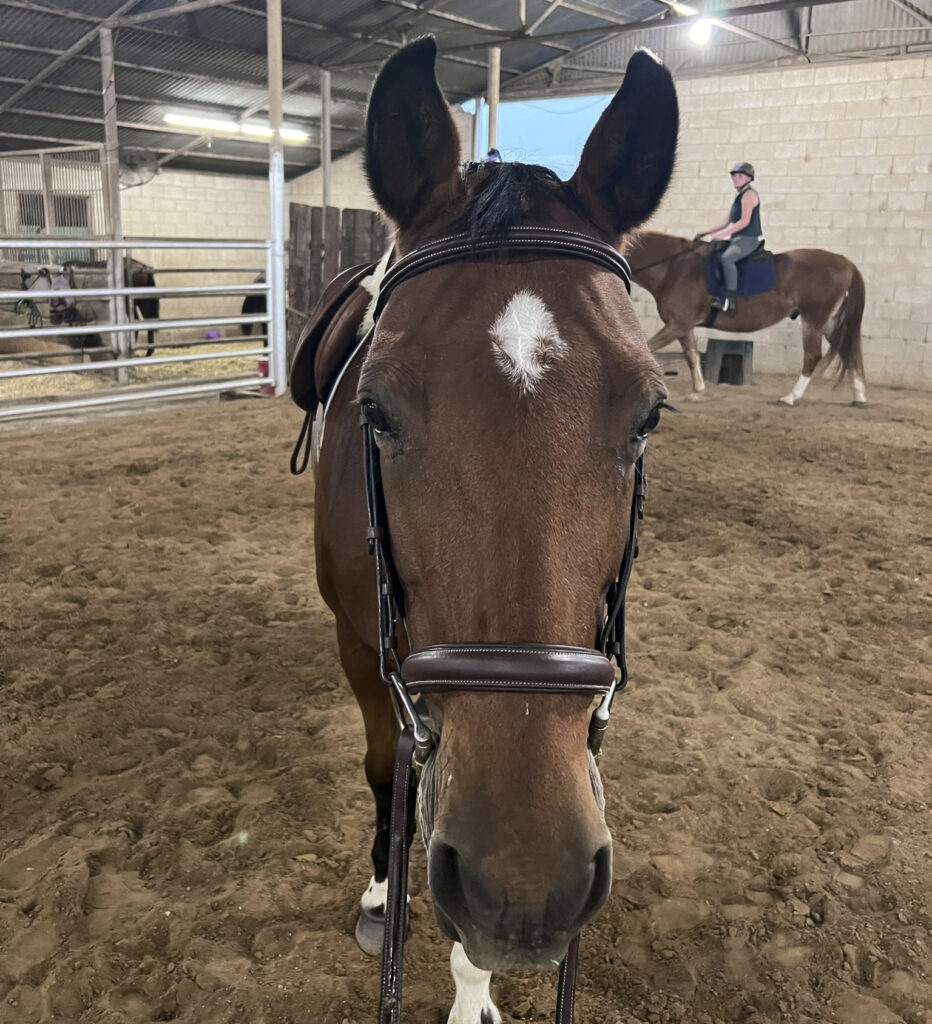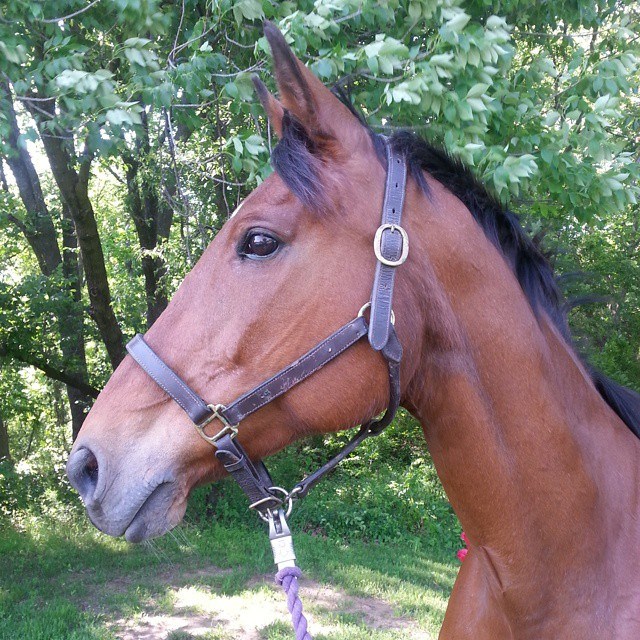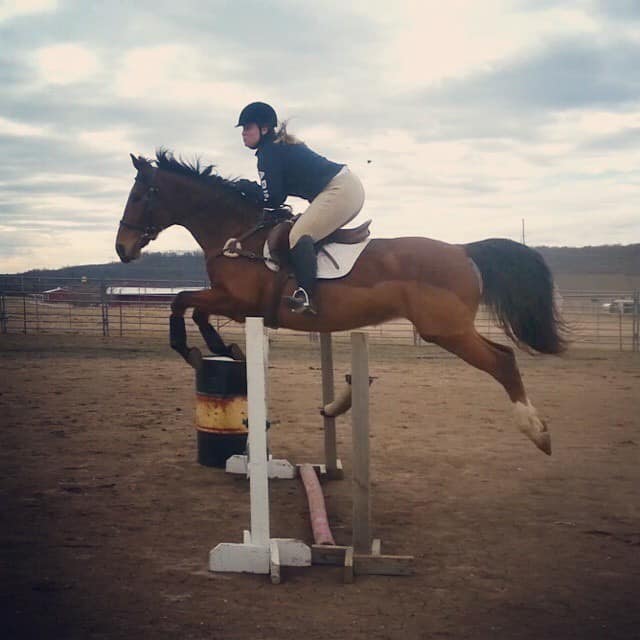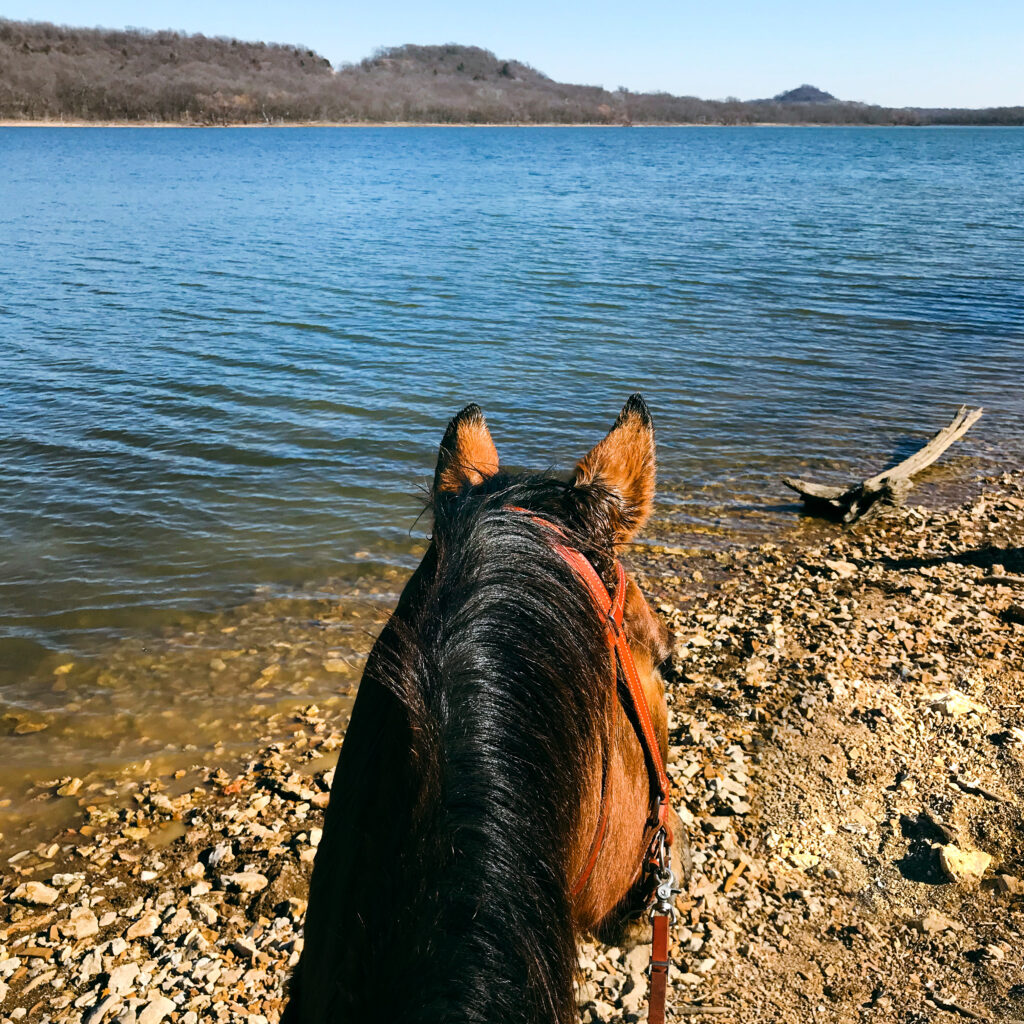Last Saturday, I hauled Story out to the hunt club’s annual Ride for the Cure fundraiser ride. This was the club’s ninth year hosting this event, which is held in conjunction with the Susan G. Komen Race for the Cure to raise money for breast cancer research. HFH is consistently one of the top fundraising teams in the region, and this year was no different- we raised about $2,000!
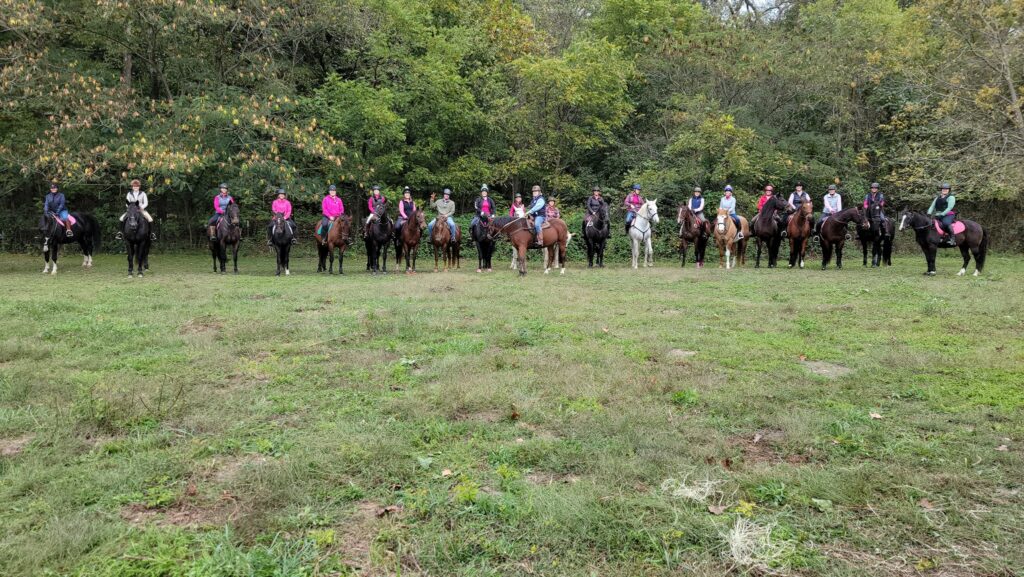
The ride drew about 25 people, and we rode as one big group. I was excited to see how Story did with a group that size, as we were part of a much smaller group at our last HFH outing. She was an absolute star! We stuck to the middle of the group for most of the ride and edged up to the front for the last third or so. The pace was brisk- lots of trotting and a little cantering- but Story never got overexcited or anxious. She prefers to do whatever the group is doing- so if most horses are trotting, she wants to trot- but she isn’t rude or nervous about it. She just jogs along until you give her some rein, at which point she picks up a real trot.
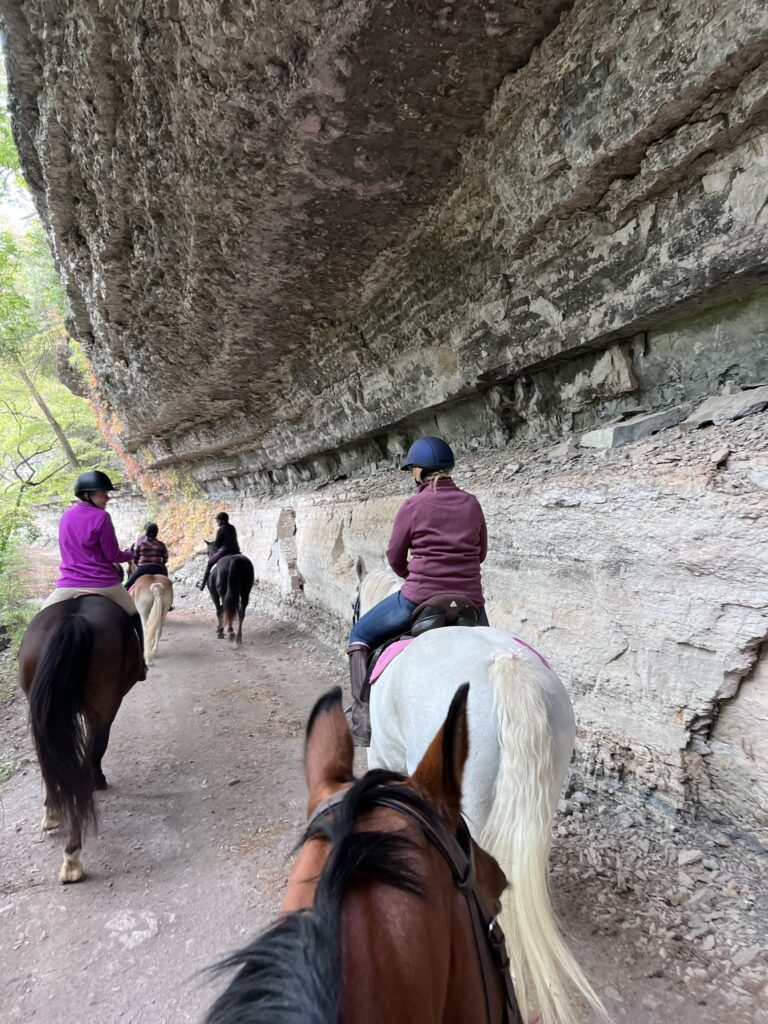
The only thing she really needs to improve is slowing down and stopping. She’s not terrible about it, but I really have to nag her to get her to stop. There’s no head-throwing or rooting or pulling; she just kind of ignores my half-halts until they become very strong. (This is the opposite of how she is in the arena, where if I think about stopping, she slams on the brakes.) Once she’s stopped, she stands very quietly. She’s currently in a D-ring snaffle, so I may try her in a kimberwicke next time we go out. (Also open to suggestions here- let me know if there’s a bit you like that’s a little stronger than a snaffle!)
We rode for about two and a half hours, and Story felt great for all of it. When I bought her, I was a little concerned about how well she’d hold up for long, fast rides. I’m used to riding Thoroughbreds who can gallop all day. But Story was fine! She was just as fresh and full of go at the end of our ride as she was at the beginning. Her legs were cold and tight the next day and she greeted me at the gate with her usual bright-eyed vigor.
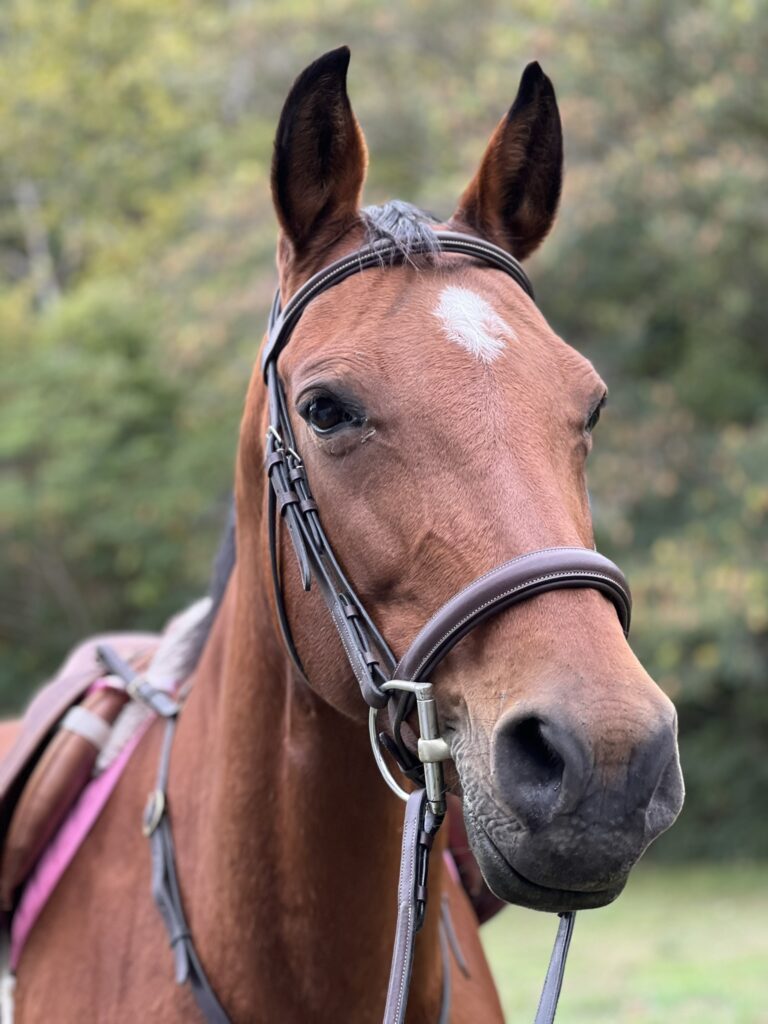
Story is still pretty bad about trailering. She is loathe to get in alone, but seems okay if another horse is loaded before her and stays in the trailer while she gets on. While this doesn’t address the root of the problem, it’s a useful piece of information! I can always load Moe with her at home and someone at the hunt is usually happy to volunteer their horse for loading help. My trainer and I continue to work on trailering, and hopefully Story will come around sooner rather than later.
Opening Hunt is in two weeks, and I have my fingers crossed I’ll make it! I had a tympanomastoidectomy last week to remove a cholesteatoma (which is basically a non-cancerous cyst) from my right ear. The procedure involved drilling a hole in my head directly behind my ear. I feel pretty good, but my ear is very sore and the incision site is exactly where my helmet harness lays. I have a follow-up appointment with the surgeon next week, so hopefully he’ll clear me to ride (and hopefully I’ll feel well enough to wear a helmet for 2+ hours). I’ve missed hunting and I’m really excited to rejoin the field!

